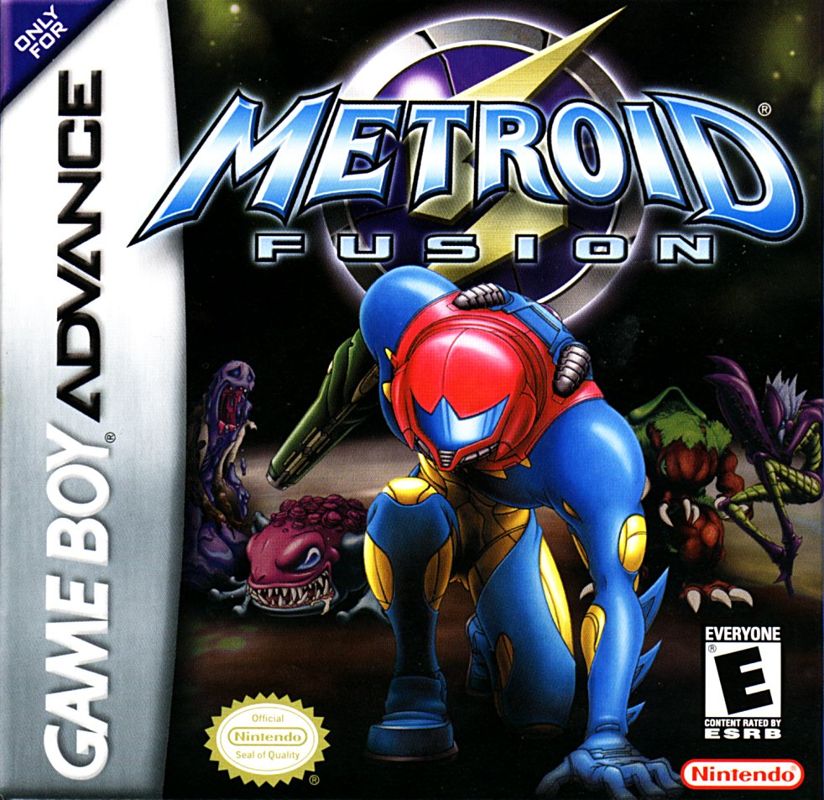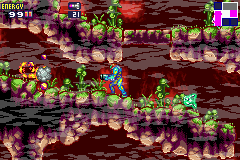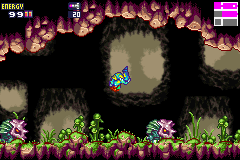Retro Replay Review
Gameplay
Metroid Fusion’s gameplay delivers a refined blend of classic exploration and modern convenience, all within a compact, side-scrolling map. From the moment you regain control of Samus Aran in the Biologic Space Labs, the familiar thrill of scanning rooms, locating hidden passages, and upgrading your arsenal kicks in. The progression is elegantly paced: you begin with only basic weapons and mobility, and then gradually unlock techniques like the Shine Spark, Spider Ball, and Bomb Jump to reach previously inaccessible corridors.
(HEY YOU!! We hope you enjoy! We try not to run ads. So basically, this is a very expensive hobby running this site. Please consider joining us for updates, forums, and more. Network w/ us to make some cash or friends while retro gaming, and you can win some free retro games for posting. Okay, carry on 👍)
One of the game’s greatest strengths is how it integrates narrative events into the very mechanics you rely on. After Samus is infected by the X parasite and cured with Metroid DNA, her Fusion Suit enhances certain abilities but also seals off others, forcing you to adapt your playstyle. This constrained toolkit makes every power-up feel more rewarding, as you can tangibly sense your arsenal growing. Boss encounters emphasize this learning curve—you must often master newly acquired moves mid-battle to exploit unique vulnerabilities.
The map design in Fusion is a masterclass in Metroidvania architecture. Each sector of the space lab—laboratories, maintenance tunnels, life support—branches into multiple dead-ends where missile caches and health tanks await the diligent explorer. Fast travel via Save Rooms and the intuitive map overlay alleviates frustration, allowing you to focus on strategic backtracking rather than wandering aimlessly. The result is a tight, self-contained adventure that keeps you motivated to uncover every secret.
Graphics
On the Game Boy Advance, Metroid Fusion punches well above its weight graphically. Samus’s sprite is rendered with crisp animations, from the fluid arc of her Morph Ball to the recoil of her charged beam. Every enemy and environmental hazard springs to life with vibrant colors and smooth frame rates, ensuring that even hectic boss battles feel responsive and polished.
Background art in the BSL facility strikes an excellent balance between sterile laboratories and ominous alien infestations. Flickering console panels, dripping pipes, and pulsating X-spawned corruption all contribute to an oppressive atmosphere. Color palettes shift subtly as you move deeper into contaminated sectors, reinforcing the sense that you are encroaching on something truly dangerous.
Cutscenes are presented in a comic-panel style, complete with expressive character portraits and dynamic text boxes. While these staccato storytelling moments may seem simple, they effectively convey Samus’s emotional journey—from near-death horror to steely resolve—without interrupting the game’s flow. Combined with the game’s audiovisual cues, these brief narrative beats heighten immersion and maintain momentum between action segments.
Story
Metroid Fusion picks up directly after the events of Super Metroid, sending Samus back to the planet SR388 to investigate the source of a mysterious outbreak. The discovery of the lethal X parasite—and Samus’s own near-fatal infection—provides a dark opening that immediately raises the stakes. There’s a disquieting irony in using a Metroid-derived vaccine to save her life, foreshadowing the uneasy tension between humanity and bioweapons throughout the game.
The plot unfolds largely through brief exchanges with the ship’s central computer, “Adam,” and the occasional log entry. These snippets flesh out the motivations of Biologic Space Labs and introduce subplots involving rogue scientists and containment breaches. While the story never becomes a sprawling epic, its lean, focused narrative suits the game’s portable format perfectly. You remain deeply invested in Samus’s mission without drowning in exposition.
Character development is subtle but effective. Samus isn’t just a helmeted warrior; she’s vulnerable and introspective after her ordeal. The X parasite’s mimicry of life-forms—and the chilling realization that it could learn and evolve—lends a sense of existential dread rarely seen in handheld titles of the era. By the final confrontation, you’re not just hunting a monster; you’re confronting the hubris of scientific experimentation gone awry.
Overall Experience
Metroid Fusion stands as one of the Game Boy Advance’s crowning achievements, seamlessly marrying tight, rewarding gameplay with a gripping, atmospheric narrative. The streamlined map and convenient save system make it eminently playable on the go, while the robust exploration and hidden collectibles offer depth for more dedicated sessions. Whether you’re a longtime Metroid fan or a newcomer seeking a sophisticated handheld adventure, Fusion hits the sweet spot.
Replay value is high thanks to features like hard mode—where you never fully recover health after unloading—and the quest to snag every missile tank and energy upgrade. For speedrunners, the game’s reliance on sequence breaks and advanced movement tactics opens up a world of possibility, transforming each playthrough into an opportunity to hone your skills.
Ultimately, Metroid Fusion is far more than a simple portable spin-off. It’s a masterfully crafted experience that respects its lineage while innovating in meaningful ways. From the moment you step into Samus’s sleek, blue Fusion Suit to the climactic showdown against the core X parasite, Fusion delivers an engrossing, adrenaline-pumped journey that remains essential for any video game collection.
 Retro Replay Retro Replay gaming reviews, news, emulation, geek stuff and more!
Retro Replay Retro Replay gaming reviews, news, emulation, geek stuff and more!









Reviews
There are no reviews yet.